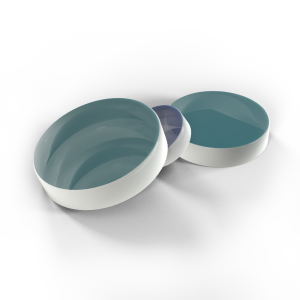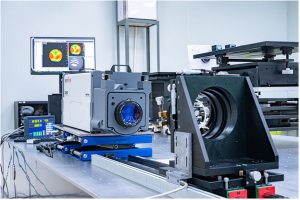
Optical Instruments: Exploring the Scientific Miracle of Light and Vision
From microscopes to cells to telescopes to capture stars, optical instruments have forged invisible light into the key to exploration, not only reconstructing the boundaries of human cognition of the microcosm and the universe, but also continuously reshaping the possibilities of medicine, technology and daily life with the precision of laser scalpels and the wisdom of spectral rituals.
Optical instruments are tools designed and manufactured by humans using optical principles, and are widely used in scientific research, industrial production, medical diagnosis, military reconnaissance and daily life. From simple magnifying glasses to complex astronomical telescopes, the development of optical instruments has not only promoted the progress of science and technology, but also profoundly changed our understanding of the world. This article will introduce the basic principles, common types and application fields of optical instruments.
1. Basic principles of optical instruments
The core of optical instruments lies in the manipulation and use of light. Light is an electromagnetic wave with characteristics such as reflection, refraction, interference and diffraction. Optical instruments change the propagation path of light through optical elements such as lenses, prisms and reflectors, thereby realizing functions such as magnification, focusing and imaging.
1. Lenses and imaging
Lens are the most basic elements in optical instruments, which are divided into convex lenses and concave lenses. Convex lenses can converge light to form real or virtual images; concave lenses diverge light. The imaging principle of lenses is based on the refraction of light. By adjusting the curvature and position of the lens, the size, position and clarity of the image can be controlled.
2. Reflection and refraction
Reflectors use the principle of light reflection to change the direction of light. Plane mirrors, concave mirrors and convex mirrors are common types of reflectors. Prisms use the refraction and dispersion characteristics of light to decompose white light into spectra of different colors.
3. Interference and diffraction
Interference and diffraction are manifestations of the wave nature of light. Interferometers use the interference phenomenon of light to measure tiny distances or detect surface flatness; diffraction gratings are used for spectroscopic and spectral analysis.
2. Common optical instruments
1. Microscopes
Microscopes are optical instruments used to observe tiny objects, mainly composed of objective lenses, eyepieces and light sources. Through the combination of objective lenses and eyepieces, microscopes can magnify tiny objects hundreds or even thousands of times. Microscopes play an important role in biology, medicine, materials science and other fields.
2. Telescope
Telescopes are used to observe distant objects and are mainly divided into refracting telescopes and reflecting telescopes. Refracting telescopes use lenses to focus light, while reflecting telescopes use mirrors. Telescopes are widely used in astronomy, geographical surveys, and military reconnaissance.
3. Camera
A camera is a device that uses optical principles to record images. It focuses light on a photosensitive element (such as film or digital sensor) through a lens to form a clear image. Modern cameras are also equipped with functions such as autofocus and exposure control, which greatly improves the convenience and quality of shooting.
4. Laser
A laser is an optical instrument that produces high-intensity, monochromatic, coherent light. Lasers are widely used in medical surgery, communications, material processing, and scientific research. For example, laser scalpels can precisely cut tissues and reduce bleeding and damage.
5. Spectrometer
Spectrometers are used to analyze the wavelength and intensity of light and are widely used in chemical, physical, and astronomical research. Through spectral analysis, scientists can determine the composition, structure, and properties of substances.
3. Application fields of optical instruments
1. Scientific research
Optical instruments play an important role in scientific research. For example, astronomical telescopes help humans explore the mysteries of the universe; electron microscopes enable scientists to observe the structure of atoms and molecules.
2. Medical diagnosis
Optical instruments are widely used in the medical field. Endoscopes can observe internal organs of the human body and assist in diagnosis and treatment; optical coherence tomography (OCT) technology is used for the detection of ophthalmic and cardiovascular diseases.
3. Industrial production
In industrial production, optical instruments are used for quality inspection, precision measurement and automatic control. For example, laser rangefinders can accurately measure distances and ensure the dimensional accuracy of products.
4. Military and security
Optical instruments also play an important role in the military and security fields. Night vision devices can observe targets in dark environments; infrared thermal imagers can detect hidden objects or personnel.
5. Daily life
Optical instruments are everywhere in daily life. Glasses, magnifying glasses, projectors, etc. are all examples of the application of optical instruments, which greatly facilitate people’s lives.
4. Future development trends of optical instruments
With the advancement of science and technology, optical instruments are developing towards higher precision, smaller size and more intelligent direction. For example, nano-optical technology enables the resolution of optical instruments to reach the nanometer level; the introduction of artificial intelligence technology enables optical instruments to automatically identify and analyze images. In addition, the integration of optical instruments with other technologies (such as quantum optics and bio-optics) will also open up new application areas.
Conclusion
Optical instruments are the crystallization of human wisdom. They not only expand our visual ability, but also promote the progress of science and technology. From the microscopic world to the vast universe, optical instruments help us explore the unknown, solve problems, and improve our lives. With the continuous development of technology, optical instruments will continue to play an important role in science, industry, and daily life, creating a better future for mankind.
Hanzhong Brisun Optics Co., Ltd. Is the high precision optical element manufacturer provides customized production of Various optical lenses, including spherical lens, cylindrical lens, optical window, mirror, prism, filter, metal base mirror and other high-precision optical elements. The base materials include various optical glass, fused quartz, calcium fluoride (CaF2), zinc selenide (ZnSe), germanium (GE), silicon (SI), sapphire, metal and other materials. And provide antireflective film, high reflection film, spectroscopic film, metal film and other optical coatings.
Welcome to OEM and Purchasing!


